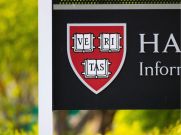I am not sure how widespread this is, but the organizers of Occupy Wall Street have called for a national student walkout today in support of their movement.
At the University of Massachusetts at Amherst, for example, a flyer declares:
WE ARE THE FUTURE
—WE ARE THE—
99%
In Support of Occupy Wall St.
***NATIONAL***
SCHOOL WALKOUT
FRIDAY OCT 28
PASS THE WORD Find us on Facebook
Search ‘Occupy America’
OCCUPY UMASS: LEAVE CLASS AT 12:00
PM AND MEET OUTSIDE W.E.B. DUBOIS
LIBRARY!!
I can’t reproduce the diversity of font and font sizes in this transcription. You will have toimagine the “99%” in jumbo letters and the lines at the bottom in “See-the-Amazing-Zebra-Man” script. The UMass organizers lean heavily on the august typographical traditions of the traveling circus.
The Occupy movement blends the theatrics of the campus left with the mobbing tactics frequently employed by Alinsky-ite community organizers. Its encampments verge on the edge of lawlessness and, increasingly, tip over into actual lawlessness. “National School Walkout” is not so much an expansion of the concept as a the movement’s triumphant return home.
One of the Occupy movement’s signature concerns is student debt, and two days ago in Denver President Obama attempted to tap into the widespread unhappiness of college students and graduates by announcing steps to make loan consolidations easier, which will marginally reduce debt service costs for some and lower interest rates for some low-income borrowers. Substantively the steps don’t amount to much, but they burnish the Occupiers’ grievances as legitimate and single out college students as a constituency to be actively solicited.
The new attempt by the Occupy movement to rally campus support makes sense on several levels. The eat-the-rich anti-capitalism of the movement derives much of its energy from recent college graduates whose wide-eyed misunderstanding of the nation’s finances comes from their campus introduction to Marxist theory and redistributionist rhetoric. Beneath this lies a genuinely legitimate complaint: Many college grads have indeed put themselves into significant debt while acquiring relatively little education and few marketable skills. Unemployment is concentrating their attention. The protestors could rightly turn their attention to higher education as among the key sources of their predicament.
Will the UMass “school walkout” and similar ventures elsewhere focus on the compacted problem of a system that urges students to go deeply into debt to obtain a specious education and unmarketable credentials? I doubt it. American higher education is pretty successful in convincing students that colleges and universities are on their side and that it is the rest of society that is at fault. The basic stance of American colleges and universities is antagonism toward other institutions, and this lesson is writ large in the Occupy movement.
The movement’s grandiloquent conceit—“We are the 99 percent”— squanders whatever moral credibility the students might have in aligning their grievances with the broader public. The New York Times declares that “almost half the public thinks the sentiment at the root of the Occupy movement generally reflects the views of most Americans.” That’s vague enough that it might be true. What exactly is that “sentiment?”
The University of Massachusetts, of course, has a storied history of protest. In recent decades, most of it has been at the direction of campus radicals promoting progressive causes. Interesting, it was not always so. I find in Harold Whiting Cary’s 1962 book, The University of Massachusetts: A History of One Hundred Years, an account of the spring 1929 student movement organized as the “Agitation Committee.” Its issue was the “broadening of the curriculum to permit the granting of an Arts degree.” And its successful “aggressive” tactic was to win over the alumni. In trying to improve their education, the students apparently didn’t see any reason to stage a “school walkout.” Agitation just isn’t what it used to be.
This article first appeared at the Chronicle of Higher Education's Innovations blog on October 19, 2011.













